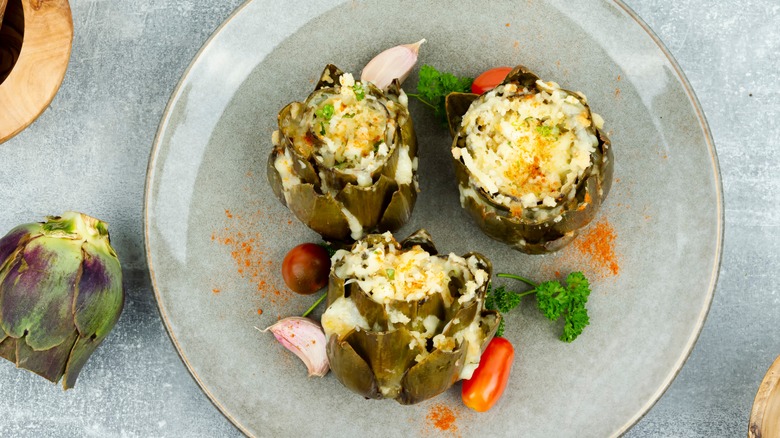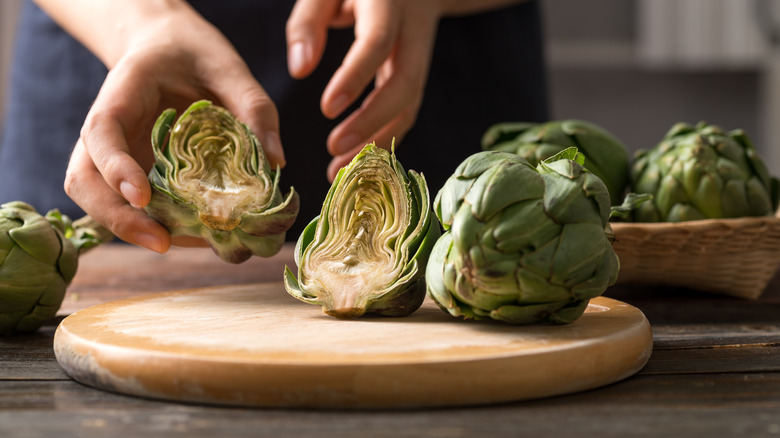How To Stuff Artichokes The Right Way
That the artichoke is a member of the thistle family is no surprise to anyone who's been stabbed by the hard and thorny leaves on the outside and the purply, prickly "choke" on the inside. The best motivator to get past that is to focus on the nutty, meaty, and even creamy flavors that make artichokes so versatile. They can be roasted, grilled, braised, and baked in any number of ways on their own — or raise the bar in a frittata, ricotta pie, pasta salad, and cheese dip. Arguably, artichokes shine brightest when they embrace their natural goblet shape and open themselves to a good stuffing, and what you include in the stuffing is nearly as important as how you stuff it.
Before considering what to stuff your artichokes with, you first have to make a space for it. Using a good pair of kitchen scissors, snip off the thorny tips of the leaves and remove smaller, jutting leaves entirely. This makes it safe to proceed to the next step: gripping the body firmly and slicing off the tail so the artichoke can sit flat. Then, remove the rounded tip of the artichoke, about an inch down, to expose the inside. Now, gently pull and loosen the sides to open it further and reveal the choke, which you should scrape out until you reach the coveted heart at the bottom. Now your artichoke is ready to stuff.
Filling an artichoke
Before you chop and dice the ingredients for stuffing, soak the waiting artichokes in a bowl of water and lemon juice to prevent browning by oxidation, which can happen quickly. As for the stuffing, recipes vary tremendously. Nevertheless, favorite stuffers include bread crumbs, garlic, and parsley. Fontina, Parmesan, blue cheese, and mozzarella also make regular appearances if not serving as the primary stuffing ingredient in dishes like cheese-stuffed artichokes. Travel around the world, and you'll also find fava beans, black olives, and ground lamb stuffed into artichokes.
Regardless of your choice, fill the artichokes to the brim and even over to coat the surrounding leaves, enhancing the presentation. That said, take some care to not pack the filling too densely, as it might make the artichoke soggy and prevent the stuffing from fully or evenly cooking. Some experimentation may be needed to find the right amount, and the ingredients in the stuffing may affect that. From there, the artichokes are ready for steaming, ideally in a stove-top pan or pot big enough to comfortably host the artichokes in a base of water under a lid. Cook for 30 minutes to an hour, depending on ingredients and artichoke size. You'll know they're ready when you can gently pull off a leaf. Finally, serve and bask in the cheesy compliments.

